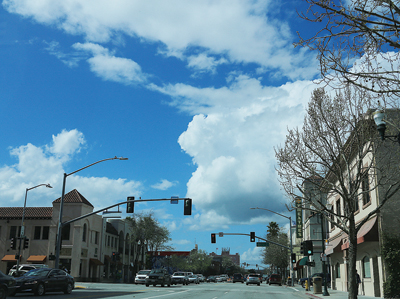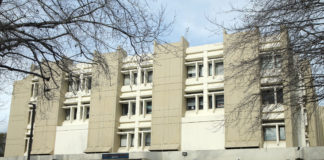SANTA CRUZ COUNTY — Santa Cruz County fared well in an air quality report released Wednesday, which state officials say is a testament to California’s stringent environmental laws.
The annual report by the American Lung Association, titled “State of the Air 2017,” shows that Santa Cruz County had no “high ozone days” in 2016, earning the county an “A” in that category.
“Overall Santa Cruz County has some of the cleanest air in the nation as far as ozone pollution,” said American Lung Association Senior Policy Analyst Will Barrett.
Otherwise known as summertime smog, the pollution can exacerbate asthma and cause other detrimental health effects.
Los Angeles, with its millions of vehicles, has consistently ranked the worst in the nation since the survey began 18 years ago, Barrett said.
Santa Cruz County did not fare as well in the second category in the report, earning an “F” for the amount of particle pollution found in the air, which is largely caused by wood smoke during the winter months.
San Benito County was ranked 22 in a list of the nation’s cleanest counties for year-round particle pollution, and was named among the cleanest counties for short-term particle pollution.
Salinas, meanwhile, was recognized as one of the nation’s cleanest cities, thanks to zero unhealthy ozone days and one of the lowest year-round particle pollution levels.
For California as a whole, the report shows the state is home to the majority of the top 10 cities with ozone and particle pollution in the United States.
In addition, more than 90 percent of Californians live in areas with unhealthy air at some point during the year, a serious issue at a time when the federal government is considering rolling back clean air protections.
“Our state’s air quality continues to hit unhealthy levels each year, putting Californians at risk for premature death and other serious health effects such as asthma, COPD and lung cancer,” said Olivia Diaz-Lapham, president and CEO of the American Lung Association in California. “We are seeing continued improvement in parts of the state, but there are too many areas where residents are breathing dirty air and we must work to reduce the sources of air pollution.”
The State of the Air 2017 report is based on air quality monitoring data collected in 2013 – 2015.
The report analyzes particle pollution in two ways: through average annual particle pollution levels and short-term spikes in particle pollution. The State of the Air 2017 report shows California saw significant spikes in particle pollution, which comes from diesel engine exhaust, wood-burning devices and wildfires.
“These tiny particles, known as soot, can lodge deep in the lungs and trigger asthma attacks, heart attacks and strokes. They can also cause lung cancer and early death,” said Dr. Alex Sherriffs, a Fresno-area physician and member of the San Joaquin Valley Air District Board and the California Air Resources Board.
•••
For information, visit www.stateoftheair.org/california2017.












